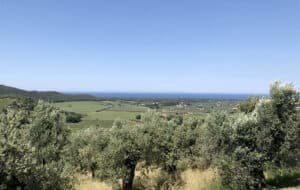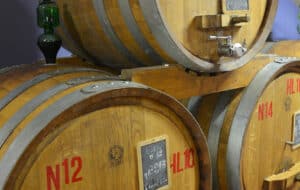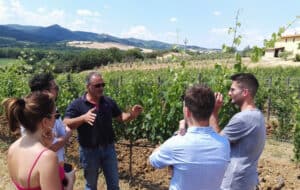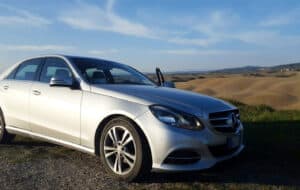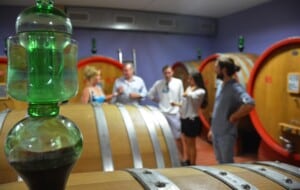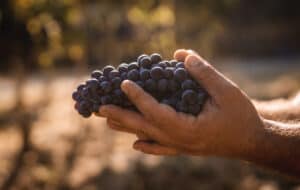Breath in the saltiness and the unmistakable scent of the Mediterranean shrubland and pine forests. Feast your eyes upon all the shades of blue, green, and red… in your glass!
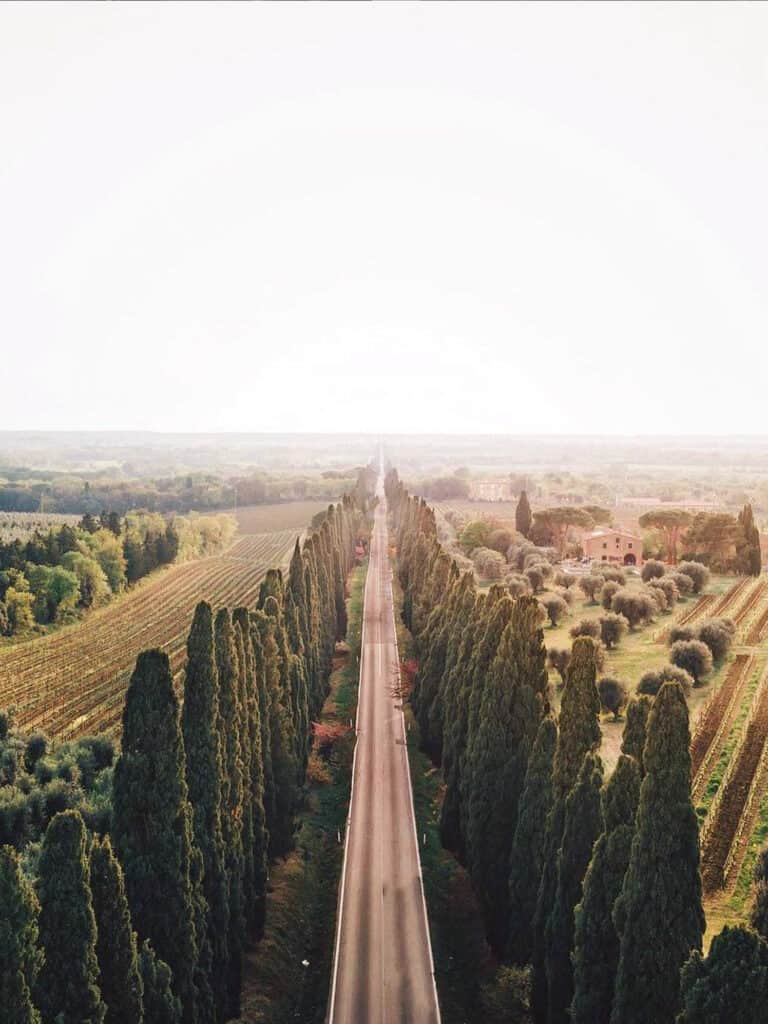
This part of the Tuscan coast south of Livorno is a delightful surprise in a part of Tuscany inhabited by the Etruscans at the beginning of the 9th century BC where they built their major port, Populonia.
The jewel among the little towns in this area is surely Bolgheri, which lies in the foothills of the Colline Metallifere. First mentioned in 1075 in a papal bull by Pope Gregory VII, its name derives from Bulgari (Italian for “Bulgarians”) due to the presence of a military camp of Bulgarians, allies of the Lombards.
The town, not far from the coast, is surrounded by olive groves and vineyards. To get to Bolgheri, you have to drive on the Viale dei Cipressi (Cypress Avenue), a straight scenic road about 5 km long lined by majestic and ancient cypress trees which ends in front of the Bolgheri Castle.
This impressive thoroughfare is celebrated by one of the most important Italian poets of the nineteenth century, Giosuè Carducci, in his famous poem “Davanti San Guido” (In Front of San Guido) as he spent part of his youth here. The entrance to the village is characterized by a red-brick castle featuring beautiful architecture.
Just above the entrance, you will certainly notice the big coat of arms of the ancient noble Gherardesca family, who has owned the castle of Bolgheri since 1200. The town itself is a real gem: no cars are allowed inside the walls, the climate is nice and mild all year long, the streets are filled with cozy restaurants, trattorias and wine shops (Enoteca Tognoni is the best in town, also really good are Osteria Magona and Osteria San Guido, right at the beginning of the cypress avenue).
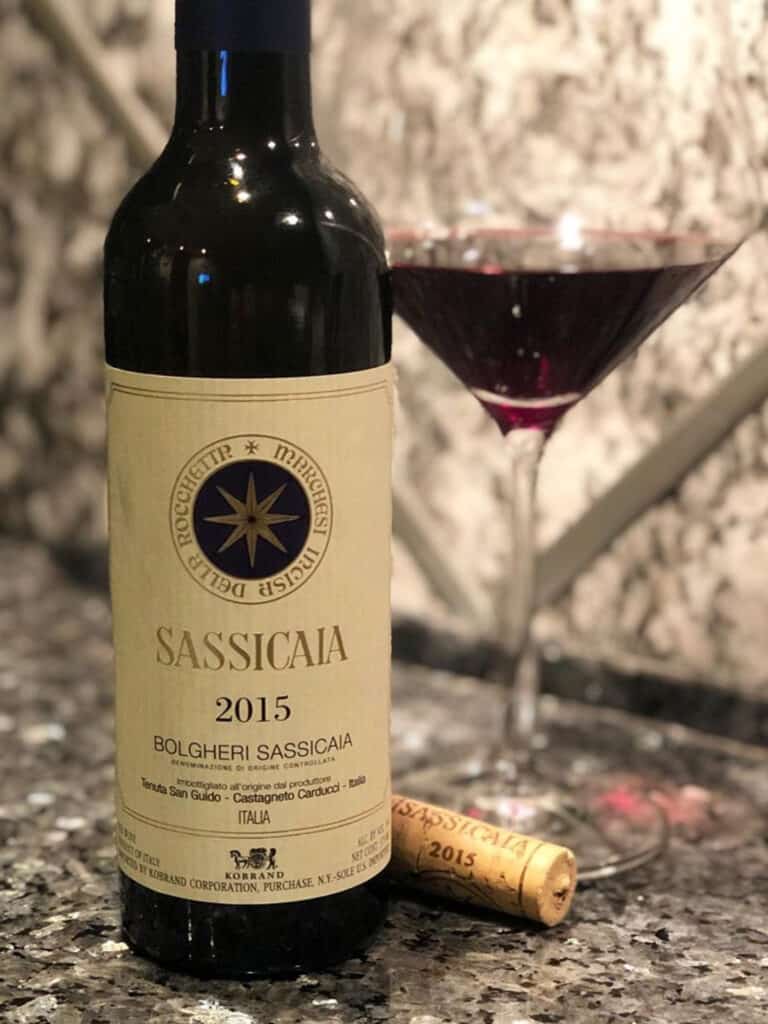
A Wine Paradise
Winewise, Bolgheri is a relatively young but already prestigious Italian appellation. It is mostly known for deeply colored, supple yet ageworthy red wines. Due to the particular characteristics of the soil and a sunny, dry, and moderately windy climate, the grape varieties of Bordeaux origin grow very well here such as Cabernet Sauvignon, Merlot, Cabernet Franc, Syrah, and Petit Verdot. The winemaking zone goes from the hills inland to the Tyrrhenian Sea.
The most famous wine in this region is Sassicaia, (whose name means “stony field” and alludes to the banks of gravel in the area, reminiscent of vineyards in the Graves and the Haut-Médoc) produced at the Tenuta San Guido estate of the Marchese Mario Incisa della Rocchetta. It is thanks to this wine that the whole region of Bolgheri became popular.
In the mid 70s during a blind tasting arranged by Decanter, a six-year-old Sassicaia won over an assortment of Bordeaux wines. In the following years, other important Italian wine families followed the Marchese. In the 1980s, Lodovico Antinori began his work on the Ornellaia estate, focusing on a special project of planting Merlot in a stony area (in fact, the famous Masseto wine is 100% Merlot), then Gaja at the Ca’ Marcanda estate in the 1990s.
Until the current DOC regulations were established in 1994, Sassicaia and all the other Super Tuscan wines produced here were usually sold as Vino da Tavola or Toscana IGT, the lowest level in the Italian classification of wines. Way less popular but not less interesting, a Bolgheri Bianco is also produced in the area usually based on Vermentino, which gives really good results here on the coast, Trebbiano, and Sauvignon blanc.
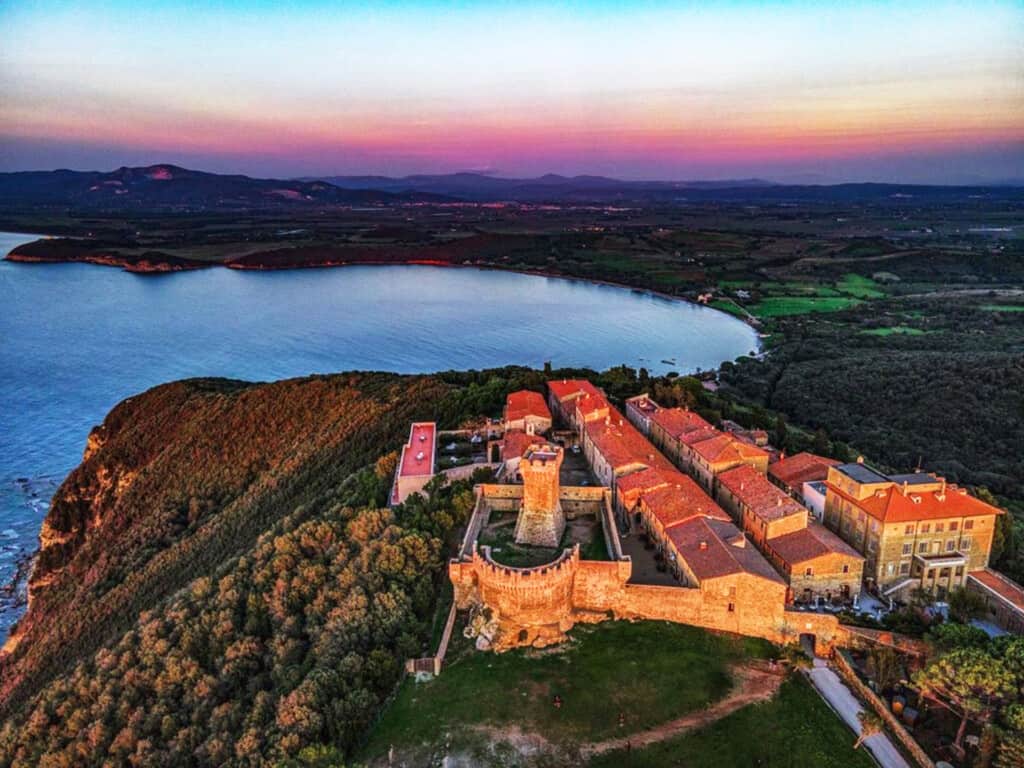
Populonia and Gulf of Baratti
While in this area and mostly if you are interested in ancient history, you really can’t miss the tiny town of Populonia and its Etruscan ruins. Populonia (Etruscan name: Pupluna or Fufluna) was an extremely important Etruscan town which flourished between the 7th and 2nd century BC. Rich in metal deposits, the town was a successful trading port and minted its own coinage.
Archaeological ruins still visible today in Populonia include tombs from the 7th century BC onwards, sacred and private buildings, metal workshops and quarters for metal workers as well as substantial portions of the city’s fortification walls. At the top of a hill surrounded by the sea, the ancient town is located in a great position on one of the promontories that form the Gulf of Baratti and features beautiful 15th-century walls built on the order of the Lords of Piombino.
A street which affords some incredible views connects Populonia to the Gulf of Baratti where there are also some very important Etruscan sites. Here, you can visit the necropolis linked to the city in the Baratti and Populonia Archeological Park along with the ruins of the industrial quarter by the port, while in neighboring Piombino there is the Populonia Archeological Museum.
Modern Populonia is located within a small portion of the walled acropolis of a large ancient city. The port has long since been replaced by the city of Piombino, which is the departure point of maritime traffic leading to Elba and elsewhere.
Suvereto
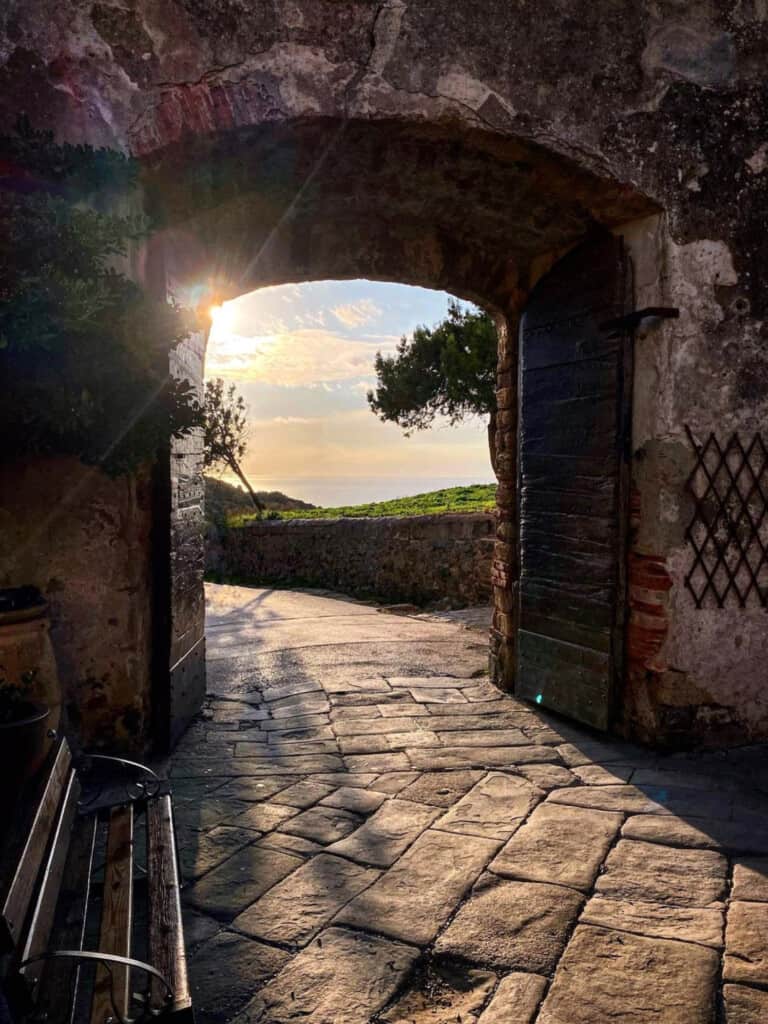
A walk in the little town of Suvereto, located between the hills and the sea on the Etruscan Coast, is also worth a visit. Immersed in the green Val di Cornia, the town is a treasure chest of wonders. Its walls are home to characteristic medieval paths, stone houses, historic buildings, and churches. All around are endless forests of chestnut, oak and, of course, cork trees, from where the town gets its name (in Italian ‘cork’ is ‘sughero’, so the name of the town means ‘cork forest’).
Dominating this little gem from the hilltop above outside the town walls is the Rocca Aldobrandesca reminding us of the historic medieval settlement. The defense walls enclose interesting sites like the Romanesque Church of San Giusto. The Convent of San Francesco and its cloister stand out high up on a hill, which was built in the 1200s and, nowadays, hosts concerts and performances.
You know it! Tuscany is an excellent region for the quality of its food, but it is mostly based on pasta and all kinds of meat. So, please, while in this area, explore the local cuisine and enjoy the fresh fish from the coast! You won’t find anything like it in the rest of Tuscany! La Perla del Mare, La Pineta, and Papaveri e Mare are three excellent seafood restaurants just 20 minutes away by car. Go for it!
The whole coastal area offers wonderful accommodation facilities: Relais dei Molini in Castagneto Carducci, Il Tombolo in Marina di Castagneto, Relais Sant’Elena in Bibbona are just some of our favorites!
